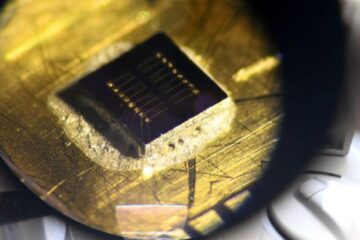Different neuronal groups govern right-left alternation when walking

The study, published in the journal Nature, demonstrates that two genetically-defined groups of nerve cells are in control of limb alternation at different speeds of locomotion, and thus that the animals' gait is disturbed when these cell populations are missing.
Most land animals can walk or run by alternating their left and right legs in different coordinated patterns. Some animals, such as rabbits, move both leg pairs simultaneously to obtain a hopping motion. In the present study, the researchers Adolfo Talpalar and Julien Bouvier together with professor Ole Kiehn and colleagues, have studied the spinal networks that control these movement patterns in mice. By using advanced genetic methods that allow the elimination of discrete groups of neurons from the spinal cord, they were able to remove a type of neurons characterized by the expression of the gene Dbx1.
“It was classically thought that only one group of nerve cells controls left right alternation”, says Ole Kiehn who leads the laboratory behind the study at the Department of Neuroscience. “It was then very interesting to find that there are actually two specific neuronal populations involved, and on top of that that they each control different aspect of the limb coordination.”
Indeed, the researchers found that the gene Dbx1 is expressed in two different groups of nerve cells, one of which is inhibitory and one that is excitatory. The new study shows that the two cellular populations control different forms of the behaviour. Just like when we change gear to accelerate in a car, one part of the neuronal circuit controls the mouse's alternating gait at low speeds, while the other population is engaged when the animal moves faster. Accordingly, the study also show that when the two populations are removed altogether in the same animal, the mice were unable to alternate at all, and hopped like rabbits instead.
There are some animals, such as desert mice and kangaroos, which only hop. The researchers behind the study speculate that the locomotive pattern of these animals could be attributable to the lack of the Dbx1 controlled alternating system.
The study was financed with grants from the Söderberg Foundation, Karolinska Institutet (Distinguished Professor Award), the Swedish Research Council, and the European Research Council (ERC advanced grant).
Publication: “Dual mode operation of neuronal networks Involved in left-right alternation”, Adolfo E Talpalar, Julien Bouvier, Lotta Borgius, Gilles Fortin, Alessandra Pierani, and Ole Kiehn, Nature, AOP 30 June 2013. EMBARGOED until Sunday 30 June 2013 at 1800 London time / 1900 CET / 1300 US EDT
Journal website: http://www.nature.com
Contact the Press Office and download images: ki.se/pressroom
Karolinska Institutet – a medical university: ki.se/english
Media Contact
More Information:
http://www.ki.seAll latest news from the category: Life Sciences and Chemistry
Articles and reports from the Life Sciences and chemistry area deal with applied and basic research into modern biology, chemistry and human medicine.
Valuable information can be found on a range of life sciences fields including bacteriology, biochemistry, bionics, bioinformatics, biophysics, biotechnology, genetics, geobotany, human biology, marine biology, microbiology, molecular biology, cellular biology, zoology, bioinorganic chemistry, microchemistry and environmental chemistry.
Newest articles

Sea slugs inspire highly stretchable biomedical sensor
USC Viterbi School of Engineering researcher Hangbo Zhao presents findings on highly stretchable and customizable microneedles for application in fields including neuroscience, tissue engineering, and wearable bioelectronics. The revolution in…

Twisting and binding matter waves with photons in a cavity
Precisely measuring the energy states of individual atoms has been a historical challenge for physicists due to atomic recoil. When an atom interacts with a photon, the atom “recoils” in…

Nanotubes, nanoparticles, and antibodies detect tiny amounts of fentanyl
New sensor is six orders of magnitude more sensitive than the next best thing. A research team at Pitt led by Alexander Star, a chemistry professor in the Kenneth P. Dietrich…





















